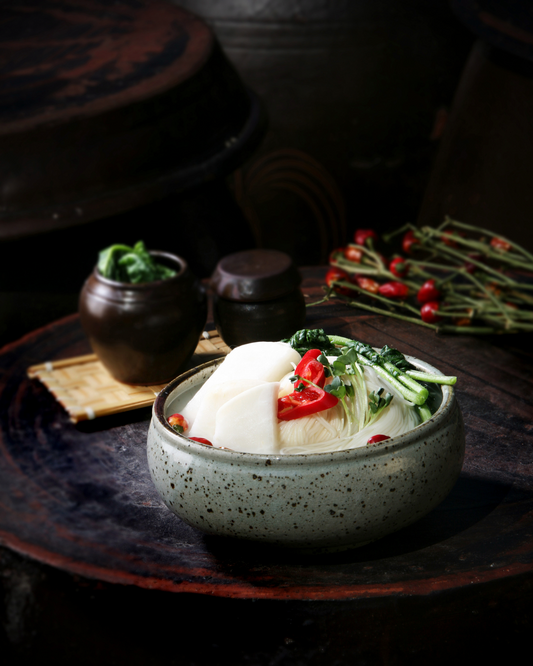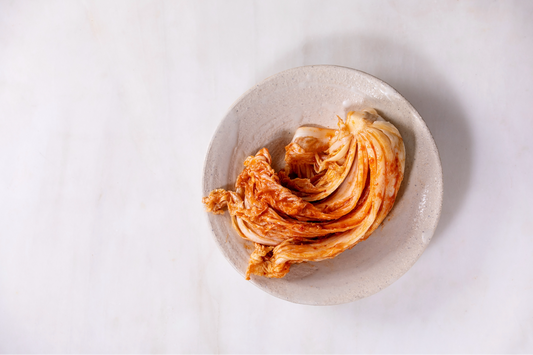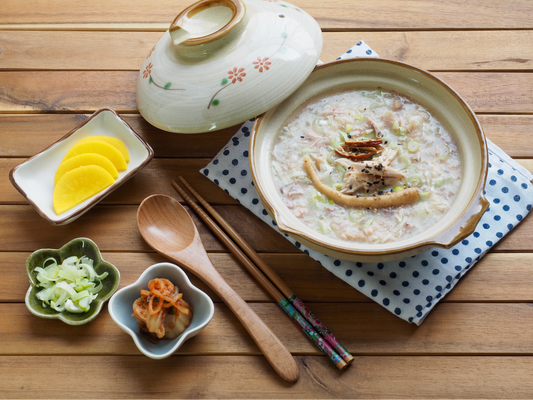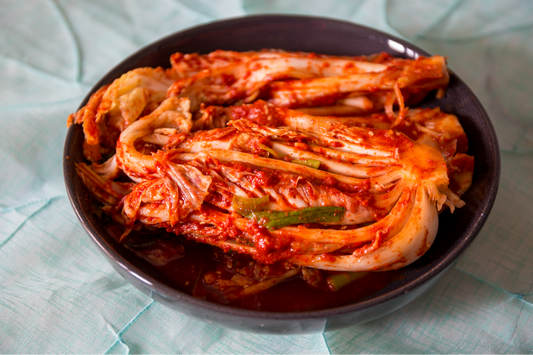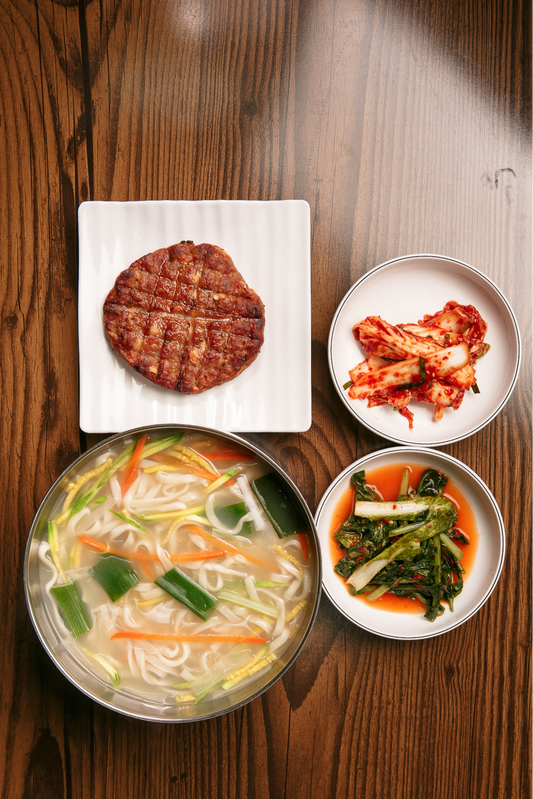Are you looking for the ultimate taste experience? Dive into the rich world of kimchi and seafood dishes. This journey blends traditions and cooking secrets. It shows you how fermented food cooking methods make simple foods taste amazing. Learn to mix the heat of spicy kimchi with cold refreshing noodles. This combo delivers a story of warmth and excitement.
Key Takeaways
-
Insights into combining spicy, fermented flavors with soothing noodles for a satisfying meal.
-
Understanding traditional Korean fermented food cooking methods.
-
Exploring the balance of kimchi and seafood dishes for an umami-rich experience.
-
Discovering the contrast and complement of warm and refreshing noodles and spicy kimchi.
-
Guidance on creating the perfect harmony in flavors for both beginners and seasoned cooks.
-
Nutritional benefits and cultural significance embedded in Korean culinary practices.
Kimchi Godeungeo Jjim Recipe
Step into the world of Kimchi Godeungeo Jjim, a Korean dish that combines kimchi's rich flavors with mackerel's soft texture. This meal is unique for its tasty combination and for the health benefits of kimchi. It's a healthy option for any table.
Ingredients and Cooking Method for Kimchi Godeungeo Jjim
For this special dish, gather mackerel and some veggies like onions and green peppers. First, put ripe kimchi at the bottom, then add mackerel on top. Mix Korean chili flakes, soy sauce, and ginger for the sauce. Add the veggies, then pour a mix of kimchi juice and water over them. This lets every ingredient soak up the flavors, making the kimchi godeungeo jjim recipe so delicious.
Estimated Cooking Time for Kimchi Godeungeo Jjim
Making Kimchi Godeungeo Jjim takes about 50-60 minutes from start to finish. This includes preparing and cooking everything. It's perfect for those wanting a fancy meal without spending all day in the kitchen.
Difficulty Level of Kimchi Godeungeo Jjim Recipe
This recipe has a moderate difficulty level. It's great for cooks wanting to try Korean food and beginners too. The steps are simple. With all the ingredients ready, you'll make a spicy and rich dish without trouble.

Kimchi Godeungeo Jjim Cooking Tips
Preparing Kimchi Godeungeo Jjim is an art. It's a traditional Korean dish known for its rich flavors. You'll need to master some key techniques. With some knowledge and the right mackerel jjim cooking tips, you can take it to another level.
Tips for Enhancing Flavor in Kimchi Godeungeo Jjim
Secrets to a tasty mackerel jjim include prepping the seasoning blend early. Make it a day ahead to let flavors combine well. Paying attention to small details really boosts the dish's taste.
Swapping ginger powder with soybean paste cuts the mackerel's fishiness. Cooking the dish in rice water thickens the sauce. It also adds a layer of flavor that complements the mackerel and kimchi.
How to Perfectly Balance Mackerel and Kimchi in Godeungeo Jjim
Getting the kimchi and mackerel balance right is key. Baste the mackerel with the stewing liquid to even out flavors. This makes every bite rich in taste.
Use kimchi that's fermented just right. It should be sour but not too strong. A bit of sugar can make all the flavors come together beautifully.
The real beauty of Kimchi Godeungeo Jjim is in its history and preparation. By using these tips, you’re not just cooking. You're embracing a culture full of flavor and heritage.
Kimchi Godeungeo Jjim Variations and Applications
Korean cuisine shines through its adaptability and rich flavors, as seen in Kimchi Godeungeo Jjim. This dish combines spicy kimchi with soft mackerel. It's a classic meal and a chance for creative cooking. Trying new flavors in this dish brings many opportunities for kimchi and noodle lovers.
A tasty twist is to use kimchi at different fermentation stages. Early stage kimchi gives the dish a fresher, lighter taste. It's great for those who like less spice. This version goes well with noodles, creating a harmonious blend of flavors.
Some chefs like to mix up the mackerel or add other seafood like squid or shellfish. This adds richness and a variety of textures to the stew, making it more filling.
For spice enthusiasts, adding more Korean chili peppers or gochujang can really turn up the heat. This spicier version is perfect for lovers of hot flavors. It would be the star of a Korean-themed meal.
Adding vegetables like zucchini, carrots, or potatoes makes the dish fuller and nutritious. These veggies absorb the spicy broth, contributing flavors and textures. This approach not only boosts nutrition but also appeals to more tastes. It's ideal for family meals and gatherings.
Varying Kimchi Godeungeo Jjim displays the flexibility of Korean cooking. It introduces this cuisine to various palates and dietary needs, letting more people enjoy the special flavors of kimchi and noodles.
Health Benefits of Main Ingredients in Kimchi Godeungeo Jjim
The traditional Korean dish, Kimchi Godeungeo Jjim, is known for its rich flavors. It also offers nutritional benefits. Combining kimchi and mackerel, it supports a healthy diet. The health benefits of kimchi and mackerel enhance overall health in many ways.
Health Benefits of Kimchi and Mackerel in Kimchi Godeungeo Jjim
Kimchi, key in Korean food, is famous for its spicy taste and health perks. It's fermented, adding probiotics that help with gut health. These can also boost mental health. The health benefits of kimchi include being rich in vitamin C and fiber, aiding immunity and digestion.
Mackerel is packed with omega-3 fatty acids, which fight inflammation and lower heart disease risks. It's high in protein but low in carbs. Alongside kimchi, mackerel adds essential fats and protein. This makes the dish both filling and healthy.
This mix is not just tasty but also boosts heart and digestive health. It adds key nutrients needed for overall well-being. The combined health benefits of kimchi and mackerel make it a powerful dish.
Taste and Aroma of Kimchi Godeungeo Jjim
The essence of Kimchi Godeungeo Jjim tantalizes both taste and smell. This dish blends the bold tang of kimchi with mackerel's richness. It shows the perfect mix of kimchi and seafood. The flavors are deep, thanks to fermentation. This makes the experience truly satisfying.
Distinctive Flavor Profile and Aroma of Kimchi Godeungeo Jjim
Kimchi Godeungeo Jjim starts with the zesty taste of well-fermented kimchi. It adds complexity that's both sharp and refreshing. Next, there's the mackerel's succulent richness. This fish is chosen for its flavor and health benefits.
The aroma of this dish is just as enticing. The air fills with spicy, tangy kimchi and fresh seafood hints. This aroma welcomes diners before they even taste the dish. It comes from traditional cooking methods, like slow braising.
Kimchi Godeungeo Jjim is a prime example of Korean culinary art. It mixes fermented food and seafood beautifully. Each bite delivers nourishment and a burst of flavors and smells. It's traditional but also intriguingly new.
Recommended Side Dishes and Drinks for Kimchi Godeungeo Jjim
To fully enjoy Kimchi Godeungeo Jjim, picking the right sides and drinks is key. This approach makes the meal better. It also follows Korean traditions, where mixing tastes and textures is important.
Perfect Side Dishes and Beverages to Pair with Kimchi Godeungeo Jjim
With Kimchi Godeungeo Jjim's strong flavors, steamed white rice is a must. It makes the mackerel and kimchi's tastes pop. Adding kimchi and noodle dishes like Japchae offers a fun mix of flavors and textures.
Try mild banchan like Spinach Namul or Korean Steamed Eggs with the main dish. These sides show off Korean cooking styles. They add variety and honor Korea's deep food history. Here, veggies are key because of the country's Buddhist past.
For drinks, light beer or cold soju are the best. They clear your taste for more flavors. If you don’t drink alcohol, chilled barley tea is a great choice. It's refreshing against the spicy kimchi and fish.
Using these suggested pairings can make a meal of Kimchi Godeungeo Jjim feel complete. It follows the Korean way of eating an odd number of different side dishes. This creates a balanced table.






